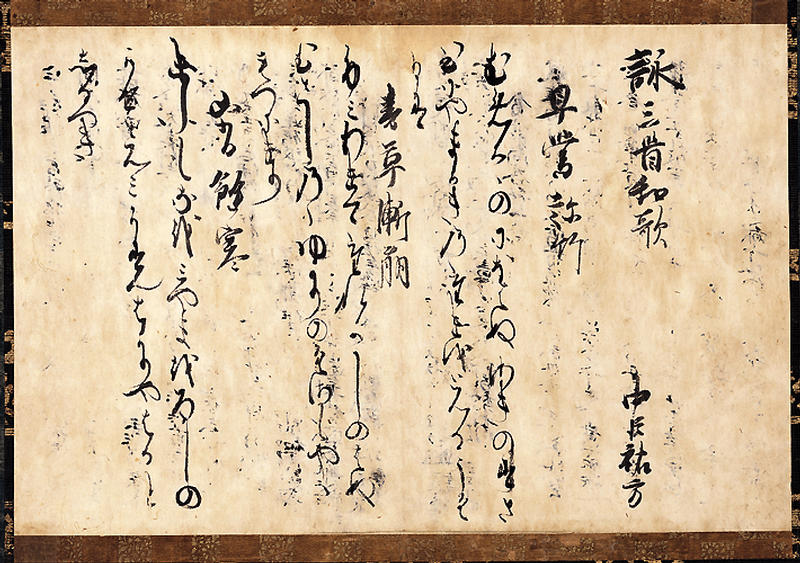Poems on Kaishi Paper, known as “Kasuga Kaishi” By Nakatomi no Sukekata
- Kamakura period
- 13c
- Hanging scroll, ink on paper
- H-28 W-42.8
Catalogue Entry
by Nakatomi-no-Sukekata
Kamakura period, 13th century
Hanging scroll, ink on paper
Height, 28.0cm; width, 42.8cm
The term Kasuga kaishi is generally used to refer to the kaishi sheets written at waka poetry parties held by the Shinto and Buddhist priests and monks from Kasuga Shrine and from Todaiji and Kofukuji temples in Nara during the Kamakura period. The great majority of these works were poetry sheets recording the poems recited at horaku waka meetings held at Kasuga Shrine, and they are extremely important historical records of the actual skills of the Nara poetry circles during the Kamakura period.
This kaishi was written by Sukekata, the son of Sukesada, and another kaishi recording these three same poems remains by a priest named Jitsugan.
On the back of this kaishi can be seen the Man'-yoshu copied by Nakatomi-no-Sukesada (1198-1269), head priest of the Kasuga Wakamiya shrine. The traces of fold marks which remain in the middle of this kaishi and the 6 holes that remain on each side edge indicate that Sukesada had bound his version of the Man'yoshu in a fukurotoji sasshi book format. When the sasshi format is bound, the tops and the bottoms of the paper are cut off, and there are thus quite a few examples of kaishi in which some of the characters are missing, but this sheet shows all of the characters as they would have originally appeared. MS
